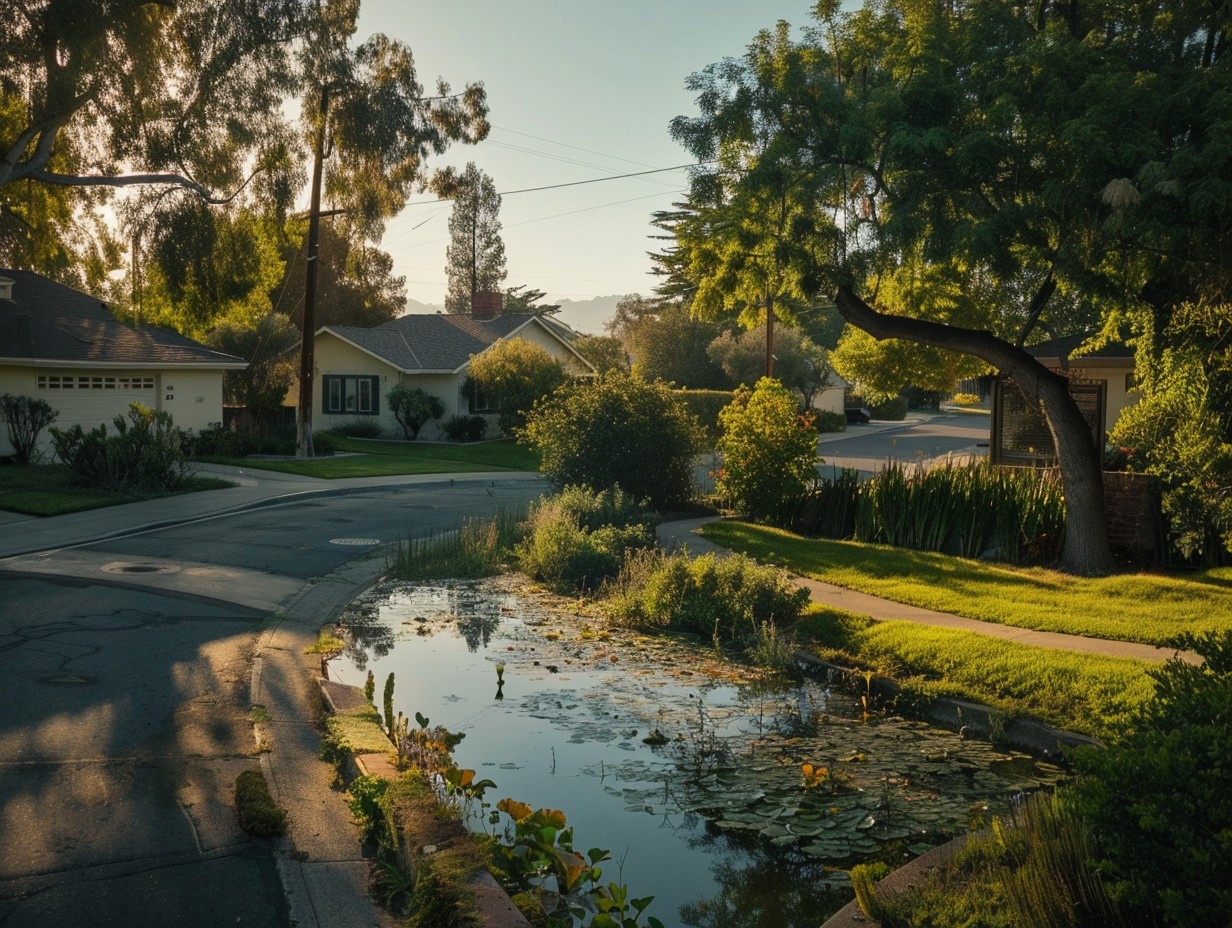
California Drainage Law: An In-Depth Overview
Historical Context of California Drainage Law
California's drainage laws have evolved significantly over the years, adapting to the state's diverse geography and burgeoning population. Initially, these laws were influenced by English common law, focusing on natural drainage patterns. The Gold Rush era brought a wave of settlers and a need for more structured water management systems. As urban areas expanded, so did the complexity of drainage issues, necessitating legal reforms. The 20th century saw the introduction of comprehensive state regulations aimed at balancing agricultural needs with urban development. Today, California's drainage laws reflect a blend of historical legal precedents and modern environmental considerations.
Key Principles of California Drainage Law
The foundation of California drainage law rests on a few key principles, including the "reasonable use doctrine" and the "civil law rule." Under the reasonable use doctrine, property owners can alter the natural flow of water on their land as long as it does not unreasonably harm neighboring properties. The civil law rule, on the other hand, prohibits any alterations that would change the natural flow of water onto another property. These principles aim to balance individual property rights with communal responsibilities, ensuring that land modifications do not lead to unfair water distribution or damage.
Responsibilities of Property Owners
Property owners in California must navigate a complex web of responsibilities when it comes to drainage. They are required to maintain their drainage systems to prevent water from damaging neighboring properties. This includes ensuring that gutters, downspouts, and other drainage infrastructure are functioning properly. Failure to do so can result in legal liability if runoff causes damage to adjacent properties. Property owners are also encouraged to consider sustainable practices, such as rain gardens and permeable pavements, to manage stormwater effectively.
Types of Drainage Systems
California employs a variety of drainage systems to manage water flow, each tailored to different environments and needs. Surface drainage systems, such as ditches and swales, are common in agricultural areas. Urban settings often utilize subsurface systems, including storm sewers and drainage pipes, to handle large volumes of runoff. Additionally, sustainable drainage solutions like bioswales and green roofs are gaining popularity for their environmental benefits. Each type of system plays a crucial role in mitigating flooding, reducing erosion, and improving water quality.
Legal Disputes and Resolutions
Disputes over drainage issues are not uncommon in California, often arising from alterations in land use or extreme weather events. Resolution typically begins with mediation, where both parties attempt to reach an amicable agreement. If mediation fails, litigation may follow, where courts interpret state laws and previous case rulings to determine liability and appropriate remedies. In some cases, local government agencies may intervene to enforce compliance with drainage regulations. The complexity of these disputes underscores the importance of understanding one's legal obligations and rights.
Impact on Urban Development
Urban development in California is profoundly influenced by drainage laws and regulations. Developers must design projects that comply with state and local drainage requirements, often incorporating advanced stormwater management systems. These regulations help prevent flooding, reduce pollution, and protect natural waterways. However, they can also add to the cost and complexity of development projects. Balancing growth with sustainable water management practices remains a critical challenge for urban planners across the state.
Practical Solutions for Homeowners
Homeowners can adopt several practical solutions to manage drainage on their properties effectively. Regular maintenance of gutters and downspouts is essential to prevent water buildup. Installing rain barrels can help capture runoff for reuse, while rain gardens can absorb excess water and reduce erosion. Permeable pavements provide an eco-friendly alternative to traditional concrete, allowing water to seep into the ground. These solutions not only comply with legal requirements but also contribute to a healthier environment.
Resources for Further Information
For those seeking more information on California drainage laws, a variety of resources are available. The California Department of Water Resources provides comprehensive guidelines and publications on best practices. Local government websites often offer specific regulations and contact information for relevant agencies. Legal advice from attorneys specializing in property law can also be invaluable. Additionally, academic institutions and environmental organizations frequently publish research and case studies that shed light on evolving drainage practices and policies.